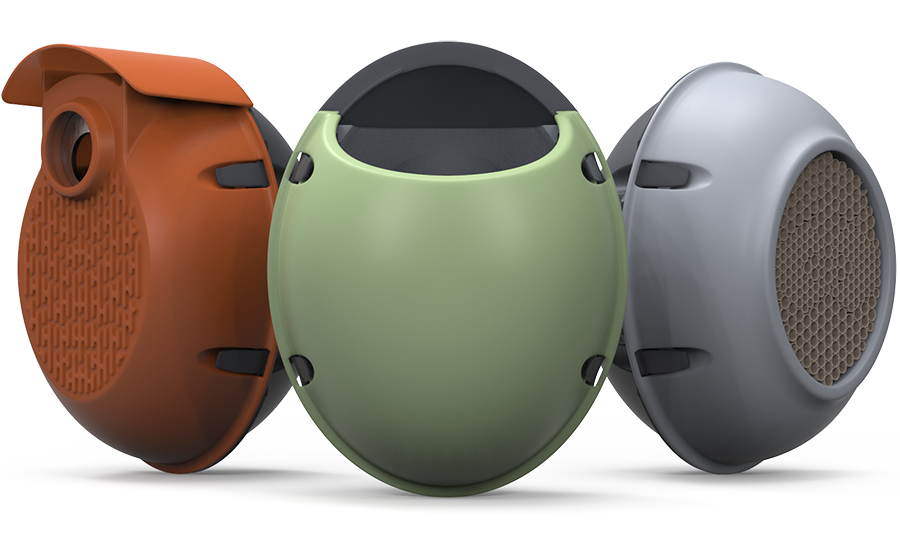Solitary Bee Guide (Europe)
Solitary bees, as their name implies, do not live in a colony (therefore they don't have a queen), nor do they swarm or produce honey. And while honey bees tend to get far more attention by the press, solitary bees are the quiet heroes of our gardens and local ecologies. In fact, of the roughly 20,000 species of bees in the world, the vast majority are solitary bees. And if you're wondering what makes bees so important to the planet, here's one reason that should stand out - more than a third of the food we eat globally exists as a direct result of pollinators. So providing a nesting site for solitary bees to produce next years pollinators - and next year's food - is a great idea.
Most solitary bees lay their eggs in the ground, but several species prefer cavities in dead wood or plant stalks. With fewer of these options available in urban and suburban areas, offering a nesting site like our Hive Pod provides a perfect home for these critically important creatures. And your flowers, herbs, trees and vegetables with thank you for it with more and healthier blooms this spring and summer!
If you're curious to know more about some of the solitary bees you might find nesting in your Hive Pod, below is a list of some of the more common species found in Europe.
Need help putting your hive pod together? Here's our Mounting & Assembly Guide

Red Mason Bee
Osmia Bicornis
Active from April - June
One of the earliest solitary bees to appear in spring, The Red Mason Bee is a spring-flying solitary bee likely to be observed in gardens and parks. Females frequently nest in garden bee hotels and use mud to line their nests. Unlike most bee species, females collect pollen on the underside of their abdomen.

Blue Mason Bee
Osmia Caerulescens
Active from April - July
Blue mason bees are small, glossy bees with bristly hairs. Females are black, often tinged with blue, with pale hairs. Males are metallic green/gold with golden hairs and patterned eyes. Blue mason bees build their egg nest cells and entrance plugs out of chewed leaves.

Leafcutter Bee
Megachile spp.
Active from May - September
Leafcutter bees are medium-sized, broad bodied bees with a hairy brown head and thorax. The abdomen of both males and females is mostly bare and black on the top, but females have a dense coat of pollen-collecting hairs underneath. As their name implies, female leafcutter bees cut sections of leaves with their jaws, which they carry back to the nest and fold to make their nest cells.

Wool Carder Bee
Anthidium Manicatum
Active from May - August
The Wool carder bee is a chunky black bee with striking yellow markings on the abdomen and a border of pale hairs. It gets its odd name from the way it uses hairs collected from woolly plants (such as Lamb’s ear and Mullein) to build its nest cells and nest hole plugs.

Sharp-Tailed Bees
(also known as Cuckoo Bees)
Coelioxys spp.
Active from June - August
Sharp-tailed bees are the "freeloaders" of the solitary bee family. In fact, they're a nightmare for mason and leafcutter bees, because they have a parasitic relationship. After mason and leafcutter bees have finished laying their eggs inside the nest tubes, the sharp-tailed bee comes along and uses the pointed tip on its abdomen to cut slits through the nest plugs before laying its eggs inside. The sharp-tailed bee larvae then feed off the pollen stores gathered by the host bee, effectively starving the mason and leafcutter larvae.

Scissor Bees
(also known as Harebell Carpenter Bee)
Chelostoma spp.
Active from May - August
Scissor bees are small, slender, black bees with almost cylindrical bodies and large heads. The small scissor bee (Chelostoma campanularum) is one of Britain’s smallest bees (4-4.5mm) The large scissor bee (Chelostoma florisomme) grows to 8mm and has distinctive forward-pointing jaws. Female scissor bees build their nest cells and plug the entrance with mud mixed with strength-adding grains of sand.

Masked Bees
(also known as Yellow-Faced Bees)
Hylaeus spp.
Active from May - September
Masked bees are small, black and almost hairless. The males have a notably pale yellow ‘face mask’, while females have a pair of yellow markings near the eyes. Masked bees can be easily mistaken for a solitary wasp, especially since the females carry pollen in their crop rather than on their body hairs. The common masked bee (Hylaeus communis) is the most likely to be found in bee hotels.


